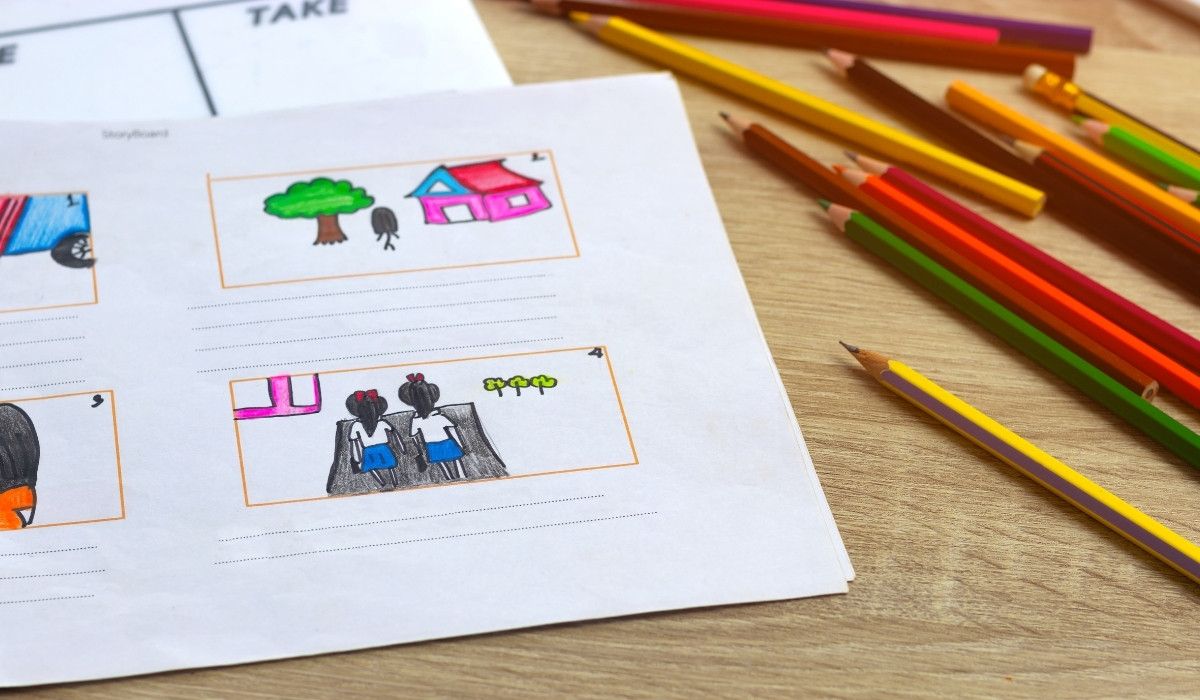Key Points:
- Social stories are personalized, structured narratives that help children with autism navigate social situations.
- They improve understanding, social skills, and daily interactions by providing clear guidance and expectations.
- Integrating social stories with ABA therapy can maximize behavioral progress and emotional growth.
Parents often hear the term “social stories” but might wonder exactly what they are and how they help children with autism. Social stories are short, simple narratives designed to explain social situations, expected behaviors, and potential outcomes in a way that is clear and manageable. They use descriptive language, often accompanied by pictures, to help children understand the social world around them.
Social stories provide a predictable framework, reducing anxiety and uncertainty that many children with autism experience. The goal isn’t just to teach a behavior but to help the child understand why the behavior is important and how to apply it across different settings.
Can Social Stories Really Help Kids with Autism?
Yes. Social stories can genuinely help kids with autism by providing clear, structured narratives that explain social situations, expected behaviors, and appropriate responses. These stories break down complex social interactions into simple, understandable steps, helping children anticipate what will happen and how to respond.
By repeatedly reading and discussing these stories, children can improve their social understanding, communication skills, and confidence in everyday interactions, making social situations less confusing and stressful. Over time, this targeted approach can support meaningful progress in both social and emotional development.
How Social Stories Support Social and Emotional Development
Social stories are more than just reading exercises—they are tools that actively shape a child’s social understanding. These stories help children:
Recognize Emotions in Themselves and Others
Social stories can illustrate different emotions, facial expressions, and appropriate reactions. For example, a story might show a character feeling frustrated when a toy is taken, modeling both the emotion and a calm way to respond. By reading these narratives repeatedly, children learn to identify emotions in themselves and others, which is a critical social skill.
Understand Social Cues and Expectations
Many children with autism struggle with implicit social rules. Social stories make these rules explicit. A story about attending a birthday party might highlight when it’s polite to say “thank you” or how to wait for a turn in games. This helps children navigate situations they might otherwise find confusing or overwhelming.
Build Confidence in Social Situations
Practicing social interactions in a low-pressure, predictable format helps children feel more confident in real-life scenarios. For instance, reading a story about introducing oneself to a new classmate can reduce anxiety and prepare the child for actual interactions.
Enhance Communication Skills
Social stories often include specific language or phrases a child can use in social situations. Over time, this exposure helps expand vocabulary and reinforces conversational skills, making it easier to initiate and sustain interactions.
5 Key Elements of Effective Social Stories
Creating a social story is more than writing a short paragraph—it requires careful attention to structure, content, and personalization. Effective social stories often include:
- Descriptive Sentences: These sentences describe the situation, the people involved, and relevant social cues. For example, “When I go to the library, there are many people who are reading quietly.”
- Perspective Sentences: These explain the feelings or thoughts of others in the scenario. For instance, “Other children might feel upset if I shout in the library.”
- Directive Sentences: These provide guidance for appropriate behavior. Example: “I will use my quiet voice when I am in the library.”
- Affirmative Sentences: These reinforce positive behaviors or outcomes. For example, “When I speak quietly, people can enjoy reading, and I feel proud of myself.”
- Visual Supports: Pictures, icons, or simple drawings help reinforce comprehension, especially for visual learners. Visual aids are particularly useful when teaching complex social concepts.
When parents or therapists use these elements consistently, social stories can become a powerful part of a child’s daily routine. This structured approach complements ABA therapy, which often focuses on reinforcing desired behaviors and providing measurable outcomes.
Situations Where Social Stories are Most Helpful
Social stories can be tailored to a variety of scenarios, from everyday routines to more challenging social encounters. Parents often ask which situations benefit most from these narratives. Here’s a detailed guide:
- School Transitions and Classroom Expectations: Social stories can guide children through the school day, explaining when to line up, how to ask for help, and expected classroom behaviors.
- Play and Peer Interaction: They teach turn-taking, sharing, and resolving conflicts during play. Stories can also model positive peer interactions and coping strategies for social misunderstandings.
- Family Routines and Household Rules: Social stories can clarify morning routines, mealtimes, and bedtime expectations, reducing resistance and confusion.
- Medical or Community Visits: Trips to the doctor, dentist, or grocery store can be stressful for some children with autism. Social stories outline what will happen, what behaviors are expected, and how to handle discomfort or waiting.
- Emotional Regulation: Stories can model coping strategies for frustration, disappointment, or anger. For instance, a story might teach a child to take deep breaths or use a calming corner when upset.
By using social stories in these contexts, parents and therapists can provide consistent guidance that is both predictable and actionable.
 Creating Social Stories at Home: Practical Tips for Parents
Creating Social Stories at Home: Practical Tips for Parents
For parents looking to implement social stories, a thoughtful approach is key. Here are some practical strategies:
Observe Your Child’s Needs
Identify situations where your child struggles, such as taking turns, responding to peers, or managing transitions.
Write Simple and Clear Narratives
Keep sentences short and concrete. Avoid abstract language that might confuse a child with autism.
Use Visuals and Repetition
Incorporate pictures, symbols, or icons. Repeat the story regularly, especially before or during the situation it addresses.
Read Together and Discuss
Engage your child in the story by asking questions, pointing out social cues, and prompting them to practice phrases.
Reinforce Positive Outcomes
Praise and reinforce when the child successfully applies lessons from the story. ABA therapy often pairs social stories with reinforcement strategies to maximize learning.
With these steps, parents can create a consistent learning tool that helps children understand expectations and manage social challenges.
 Benefits of Combining Social Stories with ABA Therapy
Benefits of Combining Social Stories with ABA Therapy
While social stories are effective on their own, pairing them with ABA therapy provides a structured environment that maximizes progress. Here’s how:
Consistent Reinforcement
ABA therapy emphasizes positive reinforcement for desired behaviors. Social stories provide a script that therapists can use to reinforce learning during real-world practice.
Individualized Learning
ABA programs are tailored to each child’s strengths and challenges. Social stories can be customized to complement a child’s unique therapy plan.
Data-Driven Progress
Behavior tracking in ABA therapy allows parents and therapists to measure the effectiveness of social stories, making adjustments when necessary.
Support Across Environments
Social stories paired with ABA therapy ensure consistent messaging at home, school, and community settings, which strengthens generalization of skills.
At Spirit ABA, we integrate social stories within our ABA programs to create a well-rounded approach. This combination helps children not only learn what to do but also understand why it matters, making social skills more meaningful and sustainable.
Tips for Measuring Success
Parents and therapists can assess the impact of social stories by looking for observable changes. Consider the following:
- Increased Social Initiations: Your child begins to greet peers, ask questions, or join activities more confidently.
- Improved Emotional Understanding: The child can identify and respond appropriately to others’ emotions, demonstrating empathy and awareness.
- Reduced Anxiety During New Situations: Predictable scripts reduce uncertainty, resulting in calmer transitions and participation in new experiences.
- Generalization of Skills: Skills learned through social stories are applied in multiple settings, from home to school to community activities.
Monitoring these outcomes over time provides valuable insights and guides adjustments to the stories or ABA plan.
 Common Challenges and How to Overcome Them
Common Challenges and How to Overcome Them
While social stories are highly beneficial, parents may encounter obstacles. Here’s how to address common challenges:
- Limited Attention Span: Keep stories short and engaging. Break them into smaller segments if needed.
- Difficulty Understanding Abstract Concepts: Use concrete language, visuals, and examples from familiar contexts to improve comprehension.
- Inconsistent Implementation: Encourage consistency by incorporating the story into daily routines and involving all caregivers.
- Lack of Engagement: Involve your child in creating the story, choosing pictures, or acting out scenarios. This fosters ownership and interest.
Addressing these challenges ensures social stories remain an effective, practical tool for building social competence.
Social Stories as a Practical Tool for Parents
Social stories are more than a classroom activity—they are a bridge between understanding and action. By providing clear guidance, modeling social cues, and supporting emotional regulation, these narratives empower children with autism to navigate daily life with greater confidence. When combined with ABA therapy, the benefits are even more significant, offering a structured, measurable approach to social skill development.
For families looking for professional support, Spirit ABA offers personalized ABA therapy that incorporates social stories as part of a comprehensive program. Our therapists work closely with children and parents to enhance social, emotional, and behavioral skills. If you’re seeking effective ABA therapy in Nebraska, Colorado, or Iowa, reach out to us and learn how our programs can support your child’s growth and daily interactions.


